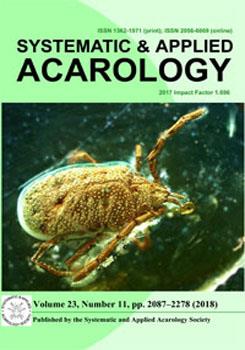The fungivorous Tarsonemus confusus Ewing is a tarsonemid mite causing a so call ‘black-dot’ symptom on the bagged apple fruit in North China, and the phytoseiid mite Neoseiulus barkeri Hughes is a cosmopolitan generalist predator of many agricultural and horticultural pests. In the present study, we evaluated the biological control potential of N. barkeri on T. confusus, by determining its functional response type to prey density of and prey stage preference on both active and quiescent life stages of T. confusus (i.e., eggs, larvae, quiescent larvae and female adults). We found that N. barkeri exhibited all three types of functional response. When fed on eggs and quiescent larvae of T. confusus, N. barkeri had a Type II functional response (i.e., inverse density-dependent predation rate); however, a Type I functional response (i.e., density-independent predation rate) was detected when N. barkeri preyed on T. confusus larvae and a Type III functional response (i.e., sigmoid density-dependent predation rate) when preyed on T. confusus adults. We further showed that the ‘constant prey’ functional response models fit our data better than the ‘depleted prey’ models, as the predator left and reencountered the previously fed prey which reduced its searching efficiency. When all active and quiescent life stages of T. confusus were available, N. barkeri significantly preferred larvae over other prey stages for feeding. Our results imply that due to its quick response to the increasing prey larval and adult densities, N. barkeri could consume a great number of active prey and is thus capable to decline the current fruit damage caused by prey feeding and to potentially prevent the prey population build-up later in the season. Furthermore, predators with Type II response may be efficient at low prey densities, thus augmentative release of N. barkeri early in the season may also suppress the egg and quiescent larva populations of T. confusus. Knowledge from this study provides insights into our understandings in the biological control ecology of N. barkeri.
How to translate text using browser tools
23 November 2018
Functional response and prey stage preference of Neoseiulus barkeri on Trasonemus confusus
Litao Li,
Rui Jiao,
Lichen Yu,
Xiong Zhao He,
Limin He,
Changxin Xu,
Linlin Zhang,
Jinli Liu
functional response
phytoseiid
prey population
stage preference





